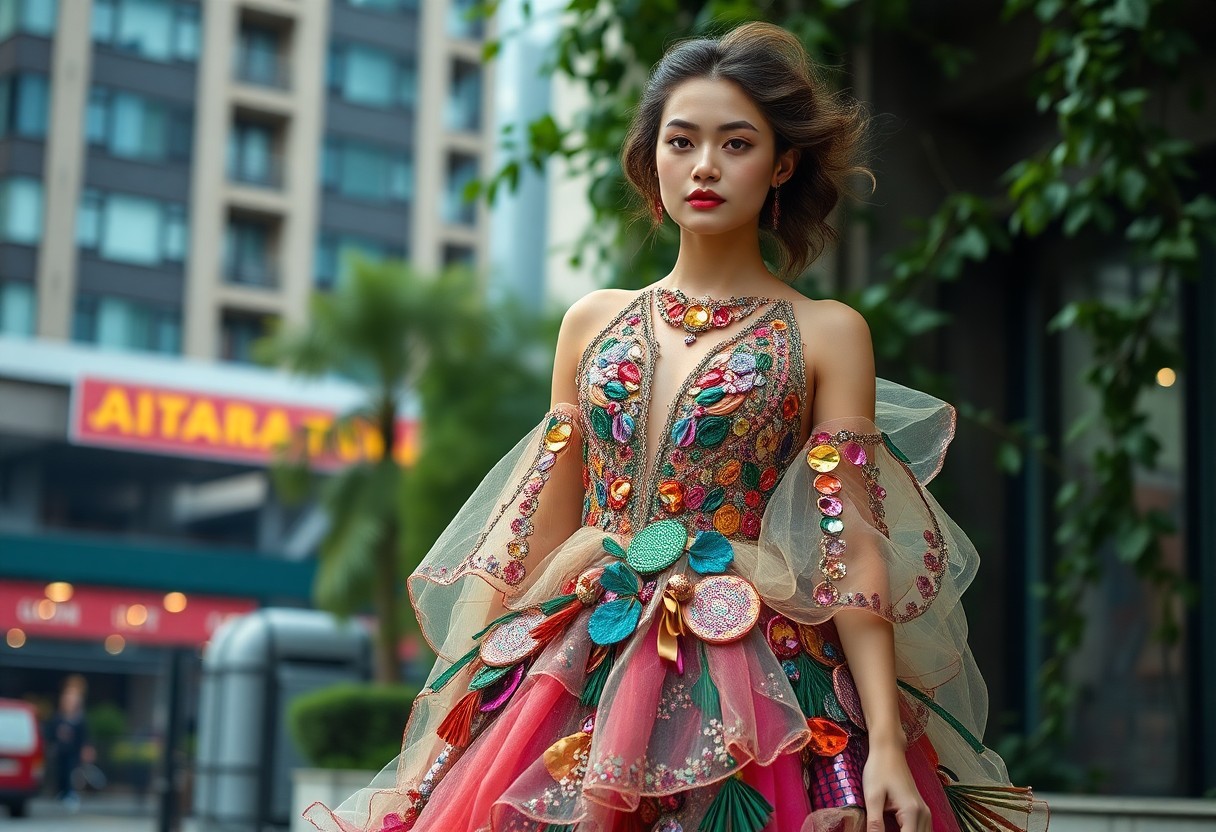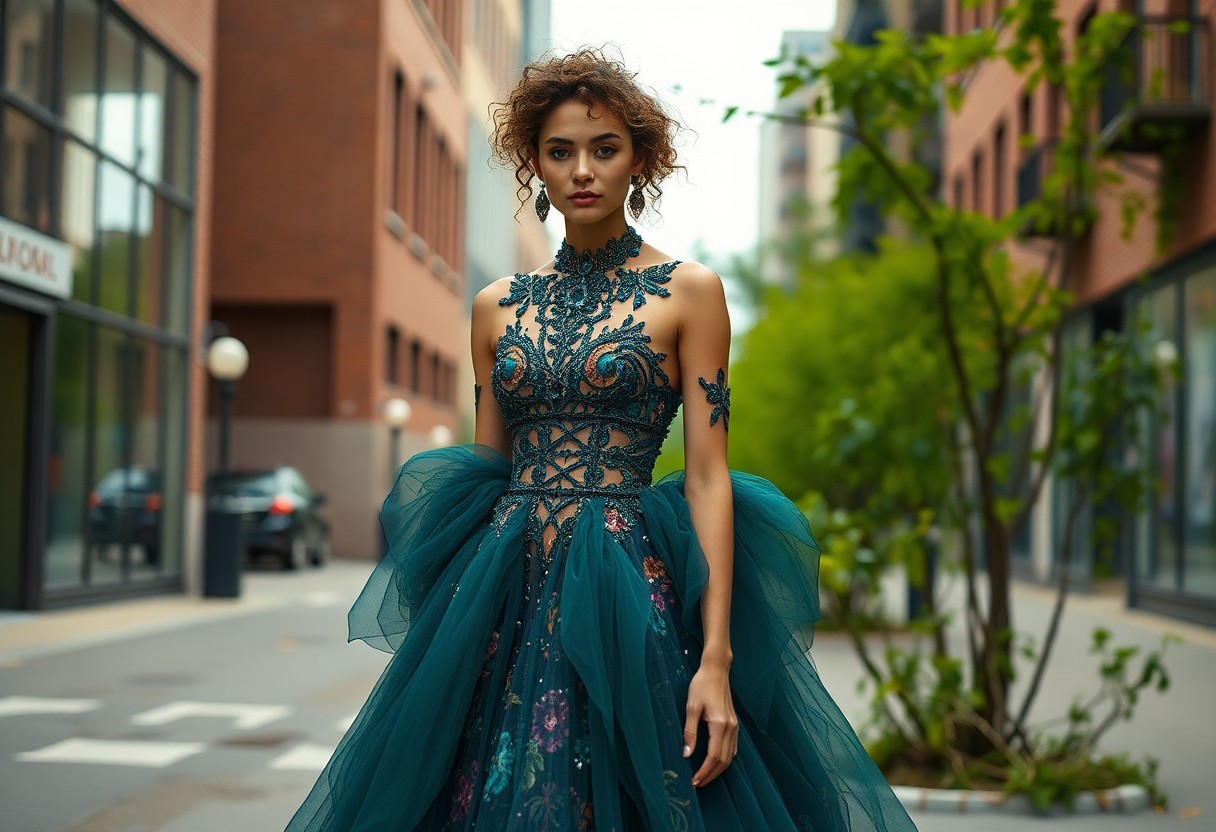26th Apr 2025
Eco-Couture Revolution: Upcycled Luxury Dominates 2025 Fashion

Just as the fashion industry undergoes a transformative shift, you stand at the forefront of the eco-couture revolution in 2025. This year, upcycled luxury is not just a trend; it’s a movement redefining sustainability in style. By choosing upcycled pieces, you contribute to a more responsible fashion landscape, reducing waste while embracing unique designs. Join fellow enthusiasts as you explore the innovative brands leading this change and elevate your wardrobe with these exquisite, environmentally-conscious choices.

The Rise of Upcycled Luxury
A shift in consumer priorities has led to the emergence of upcycled luxury in 2025. This innovative approach to fashion combines sustainability with high-quality design, allowing you to enjoy exquisite pieces while minimizing environmental impact. As a result, you can experience a new wave of creativity that transcends traditional luxury conventions, making responsible choices more appealing than ever before.
Definition and Concept
Along with the growing demand for sustainable practices, upcycled luxury transforms discarded textiles into high-end apparel and accessories. This fascinating concept challenges you to rethink your perspective on luxury, showcasing how materials that would typically be deemed waste can be elevated to create unique, stylish pieces that resonate with your eco-conscious sensibilities.
Historical Context
With the fashion industry facing increasing scrutiny over its environmental impact, upcycled luxury has roots in the early 21st century's sustainable fashion movement. Definition of upcycling arose as designers sought innovative solutions to combat textile waste, leading to a pioneering design philosophy that values both artistry and sustainability. You may find inspiration in brands that emerged during this era, as they not only redefined luxury but also sparked change within the entire industry. As collaborations between fashion houses and eco-conscious artisans increased, the concept of upcycled luxury became a testament to both creativity and environmental responsibility.

Key Players in Eco-Couture
While the eco-couture movement is expanding rapidly, it is driven by visionary designers and innovative brands committed to sustainability. These key players are redefining luxury fashion by integrating upcycled materials and environmentally friendly practices, pushing the limits of creativity while encouraging conscious consumerism. As you research into this world, you will find that your choices can support a brighter future for the planet.
Prominent Designers
Among the notable names in eco-couture, many designers are making waves with their commitment to sustainable practices. They are not just creating eye-catching garments but also emphasizing the importance of ethical sourcing and production methodologies. As you explore their collections, you’ll discover how each piece tells a story of mindful craftsmanship.
Innovative Brands
Across the fashion landscape, several innovative brands are making significant strides within the eco-couture realm. They are devoted to transforming waste into coveted fashion items, utilizing cutting-edge technologies to minimize their environmental impact.
And these brands don't just focus on aesthetics; they emphasize upcycling and sustainable sourcing, turning discarded materials into high-fashion masterpieces that resonate with eco-conscious consumers. By prioritizing transparency in their sourcing and production practices, they invite you to participate in a more sustainable fashion future. Each purchase not only elevates your wardrobe but also contributes to reducing textile waste and promoting a healthier planet. By choosing these brands, you champion a revolution in luxury fashion that reflects your values and inspires others to follow suit.

Sustainable Materials and Techniques
One of the most exciting trends in fashion today is the embrace of sustainable materials and innovative techniques that not only enhance style but also minimize environmental impact. As you explore the landscape of eco-couture, you’ll discover how designers are increasingly using organic fibers, recycled plastics, and natural dyes. This shift towards sustainability not only elevates the aesthetic value of garments but also reflects your values as a conscientious consumer.
Sourcing and Upcycling
Beside traditional sourcing methods, the focus on upcycling has transformed the way fashion is produced. You’ll find that many brands are now creatively repurposing discarded materials, turning them into high-end pieces that stand out for their uniqueness. This practice not only reduces waste but also promotes a more sustainable approach to fashion consumption.
Production Processes
Between the carefully curated materials and the techniques employed, production processes have also become more sustainable. You’ll be pleased to learn that many fashion houses are adopting low-impact manufacturing practices that reduce both energy consumption and waste. By prioritizing ethical labor and minimizing their carbon footprint, these brands are setting a new standard in the industry.
Also, the production processes focus on innovative technologies and ethical labor practices. Many designers employ methods such as digital fabric printing, which significantly reduces water usage compared to traditional techniques. Additionally, you benefit from knowing that your fashion choices contribute to a more sustainable future, as brands invest in fair trade practices and environmentally friendly energy sources. This holistic approach not only enhances the quality of your wardrobe but also fosters a sense of responsibility in your fashion journey.
Consumers' Shift Toward Sustainability
Not only are consumers becoming more eco-conscious, but they're also increasingly demanding sustainability from the fashion industry. In 2025, this trend is reflected in a visible shift towards upcycled luxury, as shoppers seek brands that align with their values. Your purchasing power now has the potential to drive positive change, making sustainability a necessity rather than an option in the fashion landscape.
Motivations for Change
After years of environmental neglect, many consumers are reevaluating their fashion choices. The rise of eco-conscious millennials and Gen Z has sparked a movement where you prioritize brands that demonstrate transparency in their sourcing and production practices. This desire for ethical consumption is reshaping industry standards and pushing luxury brands to innovate towards upcycled materials.
Market Trends and Impacts
The shift towards sustainability is not just a fad; it signifies a profound change in consumer behavior. As you lean into eco-friendly fashion choices, brands are responding by adopting more sustainable practices and showcasing their commitment to the planet.
Also, this transformation has led to an increased awareness of the environmental impacts of clothing production. You may notice a surge in brands offering upcycled products, contributing to a significant reduction in waste. Statistics indicate that the upcycled fashion market is projected to grow by 18% annually, reflecting a strong demand for more sustainable options. While some brands still face resistance, those that embrace this trend enjoy greater consumer loyalty and trust, further solidifying a greener future in fashion.
The Role of Technology in Eco-Couture
Your journey into the world of eco-couture is amplified by remarkable advancements in technology, which play a vital role in redefining sustainable luxury. With innovative solutions like digital textile printing and sustainable design software, you can create stunning pieces that align with your environmental values. As technology continues to evolve, the fusion of style and sustainability becomes ever more attainable.
Innovations in Fabric Development
Any forward-thinking designer is exploring revolutionary fabric technologies that prioritize sustainability. From bio-fabricated materials sourced from natural organisms to options that focus on recycled fibers, your choices are now more diverse than ever. This transition not only reduces waste but also ensures that your wardrobe makes a positive impact on the environment.
Digital Design and Manufacturing
Around you, the fashion landscape is shifting as digital design and manufacturing techniques redefine what it means to create apparel. Innovations like 3D printing and computer-aided design (CAD) allow you to optimize resources, minimizing excess material and waste. This streamlined process not only enhances efficiency but also opens pathways for personalized, made-to-order clothing. In an industry often mired in overproduction, embracing digital methods can lead to more sustainable practices, enabling you to wear your values proudly.
Innovations in digital design empower you to not only customize your fashion choices but also embrace sustainability at a fundamental level. With tools that enable precise modeling and simulations, you can proactively reduce material waste, while techniques like 3D printing facilitate the creation of garments on demand. This transformation means that each piece you choose can be meticulously crafted, reducing the risk of unsold inventory and further aligning with eco-conscious principles. As you engage with these technologies, you're not just wearing fashion; you're championing a movement toward responsible production in the industry.
Challenges and Criticisms
After the initial excitement surrounding eco-couture, you may encounter several challenges and criticisms regarding upcycled luxury in 2025. While this innovative approach promotes sustainability, it also faces scrutiny for its scalability, efficiency, and potential for misleading marketing practices. As you explore deeper into this revolution, it's important to be aware of these complexities that influence the future of fashion.
Production Scalability
Below the surface, the scalability of upcycled luxury remains a significant challenge. You might find that sourcing high-quality materials limits brands' ability to produce at larger scales. Smaller-scale operations often struggle to meet demand without sacrificing their commitment to sustainability. As you explore this space, you may want to consider how brands address these limitations while maintaining their eco-friendly ethos.
Greenwashing Concerns
Criticisms of the eco-couture movement frequently center around the issue of greenwashing. You should be aware that some brands may exaggerate their commitment to sustainability, potentially misleading you as a consumer. While many designers genuinely prioritize eco-friendly practices, the line between innovation and marketing can blur, leaving you questioning the authenticity of products.
Challenges include the increased skepticism from you and other consumers regarding the genuineness of sustainability claims. Financial pressures often drive brands to adopt misleading tactics, making it vital to decipher true eco-commitment from mere marketing strategies. This trend may not only erode trust but could also hinder the growth of authentic eco-couture investments, hindering its positive impact on the fashion industry. Staying informed allows you to support brands that genuinely embody sustainable principles.
To wrap up
Presently, the Eco-Couture Revolution is reshaping the fashion landscape as upcycled luxury takes center stage in 2025. You have the opportunity to embrace sustainable style by choosing innovative designs that prioritize both elegance and environmental responsibility. As you explore these trends, your wardrobe can reflect the growing commitment to sustainability in fashion. By making informed choices, you contribute to a more sustainable future while enjoying the creativity that comes with upcycled luxury.
